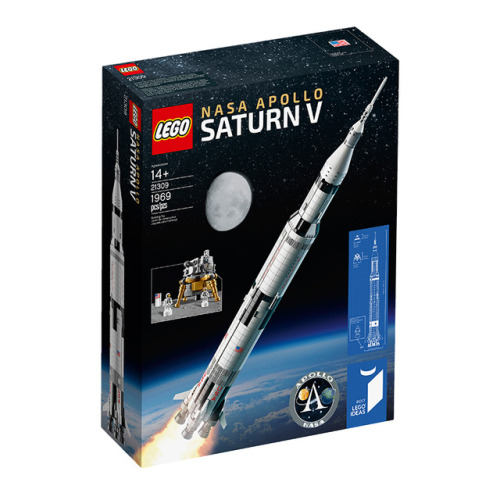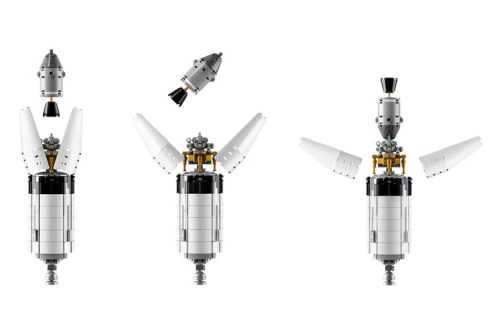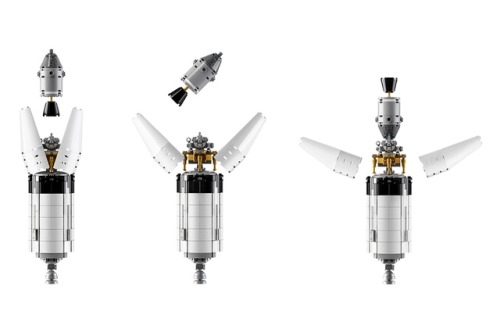#saturn v


“In memory of those who made the ultimate sacrifice so others could reach for the stars.”
53 years ago today. ✨
Merry Christmas Star Sailors
At its founding, the Marshall Space Flight Center (MSFC) inherited the Army’s Jupiter and Redstone test stands, but much larger facilities were needed for the giant stages of the Saturn V. From 1960 to 1964, the existing stands were remodeled and a sizable new test area was developed. The new comprehensive test complex for propulsion and structural dynamics was unique within the nation and the free world, and they remain so today because they were constructed with foresight to meet the future as well as on going needs. Construction of the S-IC Static test stand complex began in 1961 in the west test area of MSFC, and was completed in 1964. The S-IC static test stand was designed to develop and test the 138-ft long and 33-ft diameter Saturn V S-IC first stage, or booster stage, weighing in at 280,000 pounds. Required to hold down the brute force of a 7,500,000-pound thrust produced by 5 F-1 engines, the S-IC static test stand was designed and constructed with the strength of hundreds of tons of steel and 12,000,000 pounds of cement, planted down to bedrock 40 feet below ground level. The foundation walls, constructed with concrete and steel, are 4 feet thick. The base structure consists of four towers with 40-foot-thick walls extending upward 144 feet above ground level. The structure was topped by a crane with a 135-foot boom. With the boom in the upright position, the stand was given an overall height of 405 feet, placing it among the highest structures in Alabama at the time. In addition to the stand itself, related facilities were constructed during this time. Built directly east of the test stand was the Block House, which served as the control center for the test stand. The two were connected by a narrow tunnel which housed the cables for the controls. Again to the east, just south of the Block House, was a newly constructed Pump House. Its function was to provide water to the stand to prevent melting damage during testing. The water was sprayed through small holes in the stand’s 1900 ton water deflector at the rate of 320,000 gallons per minute. In this photo, taken March 20, 1962, construction of the Pump House area is well underway.
Post link

On November 22, 1963, President John F. Kennedy survived an attempt on his life which left his wife, Jacqueline, dead. Crippled, Kennedy resigned the presidency, but continued to be influential on American politics even as Lyndon B. Johnson assumed the office.
Almost six years later, astronauts Neil Armstrong and Joe Muldoon walked on the moon, leading Kennedy, alongside President Richard Nixon, to push the boundaries farther, slashing the budget for additional moon landings and reallocating the resources for manned missions to Mars.
NASA spends the next few decades improving the Saturn V rocket, including using Skylabs A and B (the latter of which is unofficially dubbed “Moonlab”) to make improvements to the command module in space. The Mars mission project Ares uses propulsion systems from the Saturn V-B rockets and the Skylab habitat module for a long-duration Mars trip. Descending from the Ares command module, the Challenger excursion module finally touched down at Mangala Valles, Mars on March 27, 1986.
(Voyage by Stephen Baxter, 1996)
(source)
LEGO Ideas NASA Apollo Saturn V (21309)
Even though it doesn’t include minifigures (but three microfigures instead), this latest LEGO Ideas set is simple too amazing not to share it with you.
I guess the press release about covers it all (pay special attention to the piece count, just one of many lovely details):
The wait is over! After a year in development we’re incredibly proud to unveil and present the first official images of the LEGO Ideas 21309 NASA Apollo Saturn V designed by LEGO Ideas members Felix Stiessen (saabfan) and Valérie Roche (whatsuptoday).
You’ll be able to find the 1 meter high (approximately 1:110 scale) icon of space exploration in stores from the 1st of June, 2017 for a recommended retail price of just USD 119.99 / EURO 119.99 / GBP 109.99. With 1969 LEGO elements the 21309 NASA Apollo Saturn V rockets its way into LEGO Ideas history as the tallest LEGO Ideas set, as well as the one containing most elements.
Here is the official description:
Make history with the LEGO® NASA Apollo Saturn V, the first rocket to put people on the Moon! Build the 3 stages of this stunning meter-high rocket and display it on the stand or launch into orbit. Offload the S-IC and S-II sections, dock the lunar lander with the command service module, and complete a successful Moon landing mission!
The set also includes 3 stands to display the model horizontally, 3 new-for-June-2017 astronaut microfigures for role-play recreations of the Moon landings, plus a booklet about the manned Apollo missions and the fan designers of this educational and inspirational LEGO Ideas set.
Felix and Valérie’s collaboration was guided by a shared passion for space exploration
Despite never meeting in person, space and LEGO fans Felix Stiessen and Valérie Roche beat the odds with their wonderfully brick built version of the iconic Apollo rocket. It was a collaboration that tested their skills in numerous ways but, as it turns out, the long-distance collaboration also proved to be a significant benefit to their project, as Felix states “there were often times when one of us abandoned the project for a few weeks and came back to it later; however, thanks to the fact that it is a collaborative project, it was always the case that one of us continued making progress on the project and re-motivated the other”.
Felix and Valérie’s collaborative spirit was tranferred to the LEGO design team as well, who took over the project once it was approved, in order to ensure it lived up to LEGO quality standards. Two designers, Michael Psiaki and Carl Thomas Mirriam, motivated by their enthusiasm for space, teamed up to bring the final model to life. “We were actually not asked. I was so excited when I heard that the project was potentially going to happen, and told Carl about it because I knew he was also a space fanatic. We decided it would be really cool to work together since it is such a big mode, so we approached the Ideas team about helping develop the product”, Michael said.
Post link
The first stage of the Saturn 505 launch vehicle being prepared for erection in the high bay area of the Kennedy Space Center’s Vehicle Assembly Building. Saturn 505 is the launch vehicle for the Apollo 10 mission.
Post link
A ground-level view of the huge Apollo 17 space vehicle leaving the Vehicle Assembly Building on its way to Pad A, Launch Complex 39, Kennedy Space Center. The Saturn V stack and its mobile launch tower are atop a mammoth crawler-transporter.
Post link















